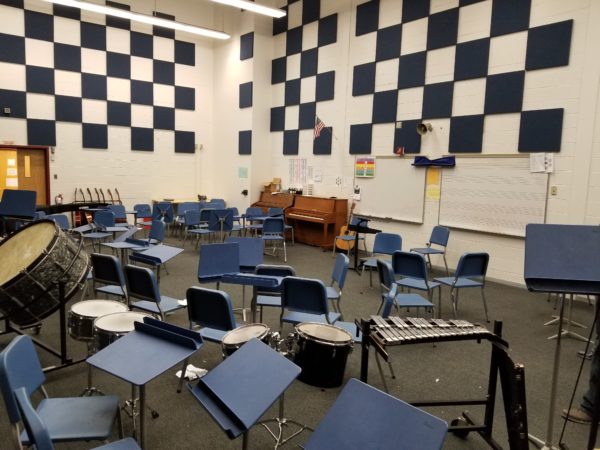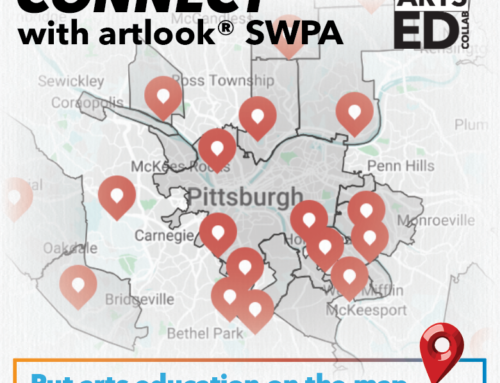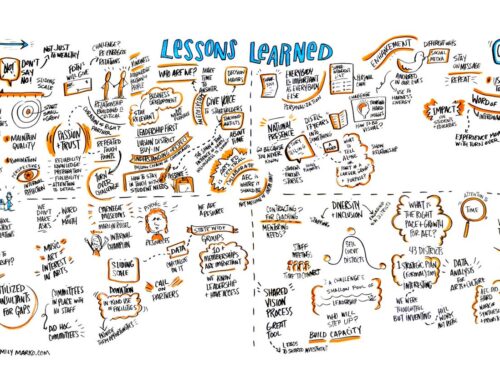 Toward an Equitable Music Program
Toward an Equitable Music Program
At Arts Education Collaborative, we are passionate about developing school music programs and are energized by exploring new possibilities for teachers and students. AEC staff members spend more than 1,000 hours each year working in school districts. We’ve observed common characteristics—including course offerings and types of learning experiences—of music programs in southwestern Pennsylvania. It’s important to note these characteristics are common but not universal. This post summarizes our understanding of the status of music programs in our region. We are curious about how these characteristics might evolve to better meet the needs of more of our children.
In elementary schools in the region, students often experience music as a standalone class beginning in kindergarten or first grade. This class is most often taught by a certified music teacher, and learning activities typically include moving to music, singing, and playing classroom instruments. All students in the school typically participate in general music. Beginning in third, fourth, or fifth grade, students at most schools can also elect to join a performing class: band, chorus, and/or strings. In most schools, students in these classes are pulled out of another class to attend small-group lessons. These small groups may or may not combine to meet as a full ensemble regularly.
In middle schools, there is less consistency. Some districts require students to take a general music class in middle school, while others do not. Others require a music class of some type, with students choosing among general music, band, chorus, and/or strings. Some districts offer elective-only options at the middle school level. Regardless of course structures, middle school is the level at which many students begin to elect into or out of their district’s music program. It is also the level at which some districts begin to offer performance ensembles as the only music option.
In high schools, music is usually elective-only. Course offerings include performing ensembles—band, chorus, strings—and sometimes music technology, guitar, piano, and/or music theory courses. While performing ensembles are ubiquitous, non-performing course options are not.
Repeatedly, we hear from students, parents/guardians, teachers, and administrators that schools try to balance serving the needs of all students with the realities of student interest, community expectations, and staffing capabilities. In our work with schools, we’ve observed two areas where these competing priorities are causing students to choose to disengage from music programs.
Structures
We believe that many existing structures—a focus on Western music theory and instrumentation, scheduling that prioritizes ensembles, and a lack of engagement with contemporary vernacular music, to name just a few—privilege some types of music learning above others. This results in students opting out of elective music classes that don’t match their interests and needs. Music programs in southwestern Pennsylvania tend to elevate performance above other types of learning such as critical listening, composition, and remixing, especially at the secondary levels. Student success in performing classes is often measured solely by their level of technique rather than the strength of their ideas and their ability to critically examine traditions and works. School performing ensembles are also almost exclusively rooted in 19th-century European instrumentation and traditions and do not honor millennia of music-making around the world.
Contributing to the performance focus of many school music programs is the idea that students must regularly perform for the community. Music teachers have told us that these performances are important to keep school music programs visible and relevant. When we examine this practice, we find its roots in the mid-1800’s. Edward Bailey Birge (1966) wrote that “large choruses of children in an auditorium or on patriotic occasions in a public square have always been accepted as a peculiarly fitting and appropriate function of public schools”, noting that the first public performance of this type occurred in 1858. 160 years later, music education in general continues to elevate performance above other types of musicianship. This focus on performance for the community sometimes puts entertainment ahead of learning.
Individuals and institutions are beginning to question the structures of school music programs and propose alternatives. Locally, Draper & Dots—a consulting group founded by musicians Lisa Belczyk and Jordan Mroziak—structures learning opportunities for youth and adults centered on non-performative music experiences. At Arizona State University, Evan Tobias leads CITME, the Consortium for Innovation and Transformation in Music Education, which “collaborate(s) with those interested in advancing music education to develop music teaching, learning, and engagement in relation to contemporary society and the future” (n.d.). Music educators, including Randall Everett Allsup and Eric Shieh, are writing about and practicing a more community-focused performance model: “When the audience becomes a community different from parents and teachers, and the performance is conceived as a response to that community, the work of performing and making music takes on a larger purpose and action” (2012).
At AEC, we leverage our self-assessment process to help school district staff examine their structures and think about how successful those structures are in meeting the needs of all students, not just those interested in performance.
Curriculum and teaching methods
In addition to structures that privilege performance, we’ve also observed that curriculum and teaching methods in music classrooms predominantly focus on formal music notation and western European folk songs. Most music teachers have some level of training in various methods: Orff, Kodaly, Dalcroze, Gordon/Froseth. All of these methods are centered in European traditions and thus ignore other traditions and types of music making. The Suzuki method was developed by a Japanese man, but it still primarily centers classical European instruments.
At AEC, we’ve become more aware of what visual arts educator and researcher Olivia Gude calls hidden curriculum and missing curriculum. Gude defines hidden curriculum as “knowledge that is transmitted without our having consciously intended to send such messages.” By prioritizing performance and music rooted in white European traditions, we are sending messages to students that these are the most important forms of music, and that other forms are less important. Missing curriculum consists of the ideas, forms, and artists/musicians that are underrepresented in learning goals. In many music classrooms, a focus on performance and European traditions means that contemporary and non-Western music and musicians are missing from the curriculum.
In 2017, we began to shift the basis of our curriculum work with school districts from the 2002 PA Academic Standards for the Arts & Humanities to the 2014 National Core Arts Standards. This shift allowed us to adopt the national standards’ updated focus on artistic literacy and student-centered learning. As a staff, we began to educate ourselves on culturally responsive pedagogy (Ladson-Billings 2016, Freire 2000). In 2018, we experimented with re-examining the national standards through a culturally responsive lens. Rather than aligning specific national standards to principles of culturally responsive pedagogy, we framed them more holistically:
- Telling personal stories: anchor standards 1-3 (creating), 4-6 (producing/performing)
- Seeing reflections of personal story in the stories of others: anchor standards 4-6 (producing/performing), 7-9 (responding), 10-11 (connecting)
- Understanding the stories of others: anchor standards 4-6 (producing/performing), 7-9 (responding), 10-11 (connecting)
We will continue to focus our curriculum work with schools on these ideas, returning to them amid conversations about teaching methods, content, and learning objectives. We recognize that in today’s accountability-driven public schools, we cannot completely disregard content acquisition as a learning goal. However, we hope to balance it with broader ideas of what is important in the arts: empathy, understanding, ideas, and story. Our vision for music programs in southwestern Pennsylvania calls for schools to put students at the center of the curriculum. Regardless of their proficiency in playing an instrument or singing, students should have access to courses that complement their interests. They should recognize themselves in the content of their music classes. Teachers can support this by writing and implementing curriculum that represents the full range of human music-making rather than holding traditions from 19th-century Europe above others. We believe that this rebalancing of school music programs will result in a more musically literate, engaged populace with members who understand and value music in all its forms.
References
Allsup, R.E.& Shieh, E. (2012). Social Justice and Music Education: The Call for a Public Pedagogy. Music Educators Journal, 98(4), 47-51. DOI: 10.1177/0027432112442969
Birge, E. B. (1966). History of public school music in the United States. Washington: Music Educators National Conference, Dept. of the National Education Association.
About CITME. (n.d.). CITME Mission Statement. Retrieved from http://citme.music.asu.edu/about/.
Freire, P. (2000). Pedagogy of the Oppressed. New York, NY: Continuum.
Gude, O. (2000). Investigating the Culture of Curriculum, In D. Fehr, K. Fehr, and K. Keifer-Boyd (Eds.), Real-World Readings in Art Education: Things Your Professor Never Told You (pp. 75-82). New York, NY: Falmer Press. Retrieved from www.academia.edu/848183/Investigating_the_Culture_of_Curriculum.
Ladson-Billings, G. (2006). Yes, but how do we do it? Practicing culturally relevant pedagogy, In J. Landsman & C.W. Lewis (Eds.), White teachers/diverse classroom: A Guide to Building Inclusive Schools, Promoting High Expectations, and Eliminating Racism (pp. 29-42). Sterling, VA: Stylus Publishers.







